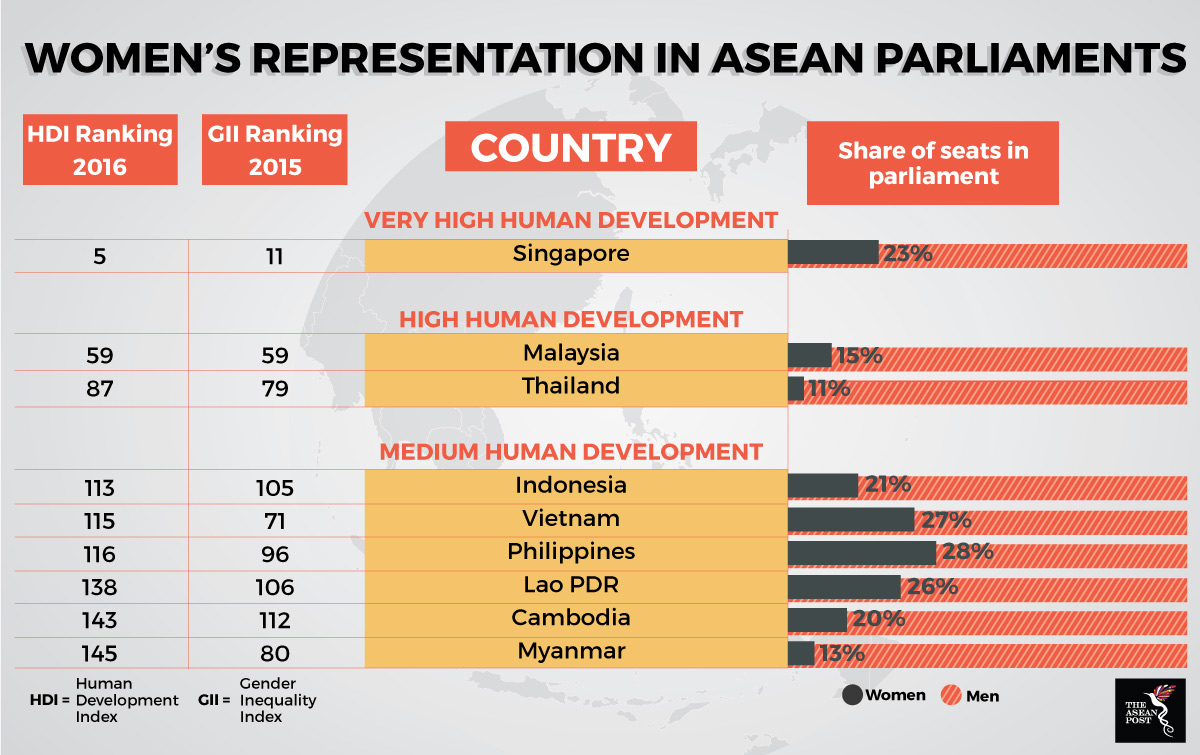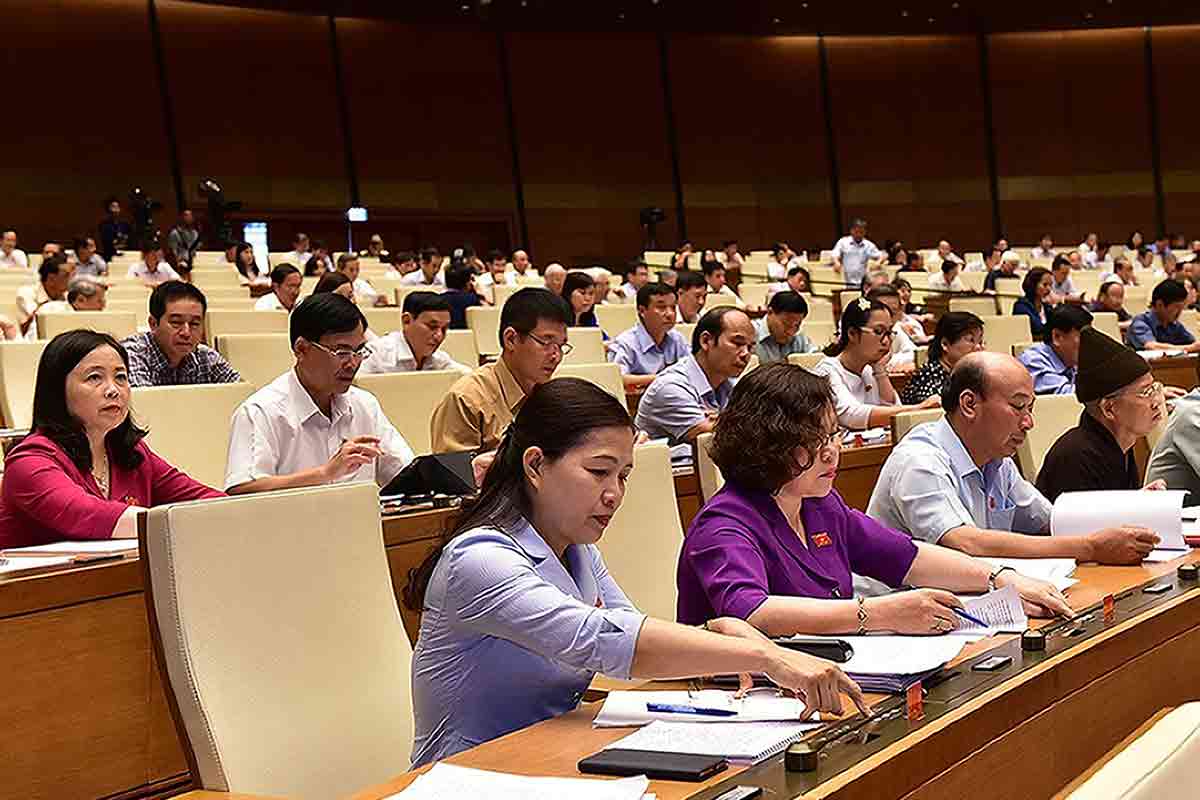When Indonesians went to the polls for the country’s 2004 general election, they voted for only 11.1 percent women's representation in parliament. This equated to a very small increase from the 9.6 percent representation following the 1999 general election. The result was disappointing as a new quota system was introduced the year before stipulating that 30 percent of all nominees in each electoral district must be women.
Working towards a better outcome for the next general election in 2009, the Indonesian parliament passed a revised electoral law that made it compulsory for political parties to ensure that 30 percent of their candidates were women. The revised law required parties to place women candidates among the top three ranked candidates, with compulsory verification by the Elections Commission. The local and national elections commissions were also required to publish the gender‐disaggregated party lists in the media.
The outcome of the 2009 election brought the percentage of women in the National Representative Assembly up to 17.86 percent. The world average at that time was 19 percent. In the 2014 general election, it was expected that women's representation would rise further. However, despite a supportive political environment, higher levels of investment and regulatory improvements, as well as favourable media coverage, the proportion of women elected to the national parliament in 2014 declined to 17.36 percent.
The lack of women’s representation in the Indonesian legislative branch is echoed across Southeast Asia, with the exception of the Philippines, Vietnam and Lao PDR where women’s representation in parliament is around 27 percent. Lower percentages are seen in Thailand, Myanmar and Malaysia at around 11, 14 and 15 percent, respectively. The latest data for Indonesia sets its women’s representation at around 21 percent, slightly higher than Cambodia’s 20 percent.
 Source: Various.
Source: Various.
The average participation of women in parliament across ASEAN countries sits at about 20 percent, lagging behind the global average of 23.8 percent. Compared to ASEAN, a higher regional average for representation of women in national parliaments can be seen in the Americas at 29 percent, Europe at 27.5 percent, and Sub-Saharan Africa at 23.6 percent. Other regions with lower regional averages for representation of women in national parliaments can be seen in Asia at 19.5 percent, the Pacific at 18 percent, and Arab States at 17.2 percent.
Underrepresented, underestimated and undervalued
Going beyond quotas and representation of women in parliament, it is in advancing the representation of women in the cabinet where they can have the biggest impact on decision-making. When the Alliance of Hope (Pakatan Harapan) dislodged the long-standing National Front (Barisan Nasional) government in Malaysia after 61 years at the country’s helm in May this year, calls were made to increase the representation of women in the cabinet to 30 percent. This echoed Commitment 5 of the Special Commitment for Women in the Alliance of Hope’s election manifesto, under which it vowed to ensure that at least 30 percent of policy makers would be women. As framed by Malaysian women’s rights organisation, EMPOWER, women's participation in the electoral process cannot be limited to just voting. There is a greater need for more substantive participation, especially in decision-making.
"Transformation can only happen with greater inclusion and leadership of diverse women in this country. This should be a core aspect of Malaysia's commitment to gender equality, to reflect this equality in the cabinet," the organisation stated.
In July 2018, when the new Malaysian cabinet was announced, women leaders were again side-lined, with only 16.36 percent of Prime Minister Mahathir Mohamad’s new cabinet made up of women, falling short of the promised 30 percent. This despite a record of 32 women elected into parliament, up from 23 for the last term.
Another core to the issue is the perception and biases of voters themselves. A survey done by the World Values Survey in 2010 to 2014 found that 69.6 percent of Malaysians surveyed strongly agreed or agreed with the statement that men make better political leaders than women, on the whole. In the same survey, the Philippines scored 56.4 percent, while Thailand and Singapore scored 54.5 percent and 45.6 percent, respectively.
We need more women in decision-making
A bigger representation of women in parliament and in positions of decision-making allows for identification and voicing of new concerns to be added to the political and developmental agendas previously unidentified or unvoiced by a largely male representation. For example, in Norway, where women represent 41.4 percent of its parliament, a direct causal relationship was found between the presence of women in municipal councils and childcare coverage. Research on female-led panchayats (local councils) in India found that the number of drinking water projects were higher there compared to areas with male-led councils.
A 2016 study by Columbia’s Journal of International Affairs found that in countries with higher conflict rates, a female president proved to be a more effective leader; reflecting women’s leadership abilities in tense situations that demand more cooperative and inclusionary practices.
In Vietnam, 27 percent of its National Assembly deputies are women. Women hold major positions in the Party and State leadership including the Politburo and National Assembly Chair. It is one of the countries with the fastest pace in eliminating the gender gap over the past 20 years. The government’s focus on regions experiencing gender inequality or prone to gender inequality has reduced domestic violence and the trafficking of women, issues that are key to Southeast Asia.
Former President of Indonesia, BJ Habibie was not wrong in 2014 when he said that not all problems can be solved by men. This is not because any one gender is less. Women make half of the world and hold half of the sky. Being inclusive to women and their perspectives and needs is key to a flourishing democracy and good governance.
